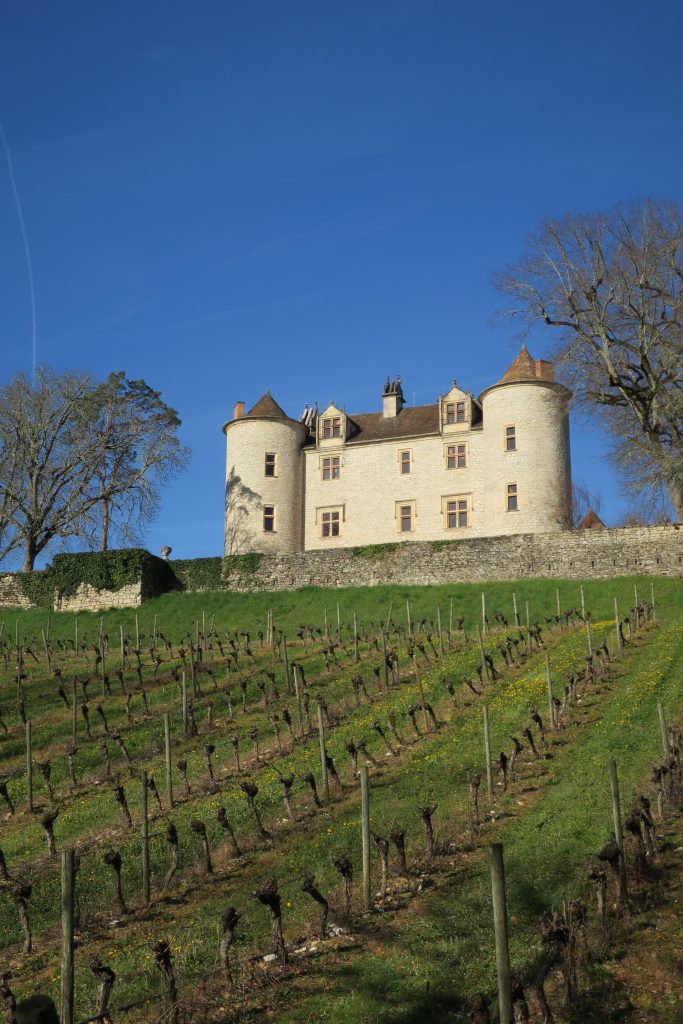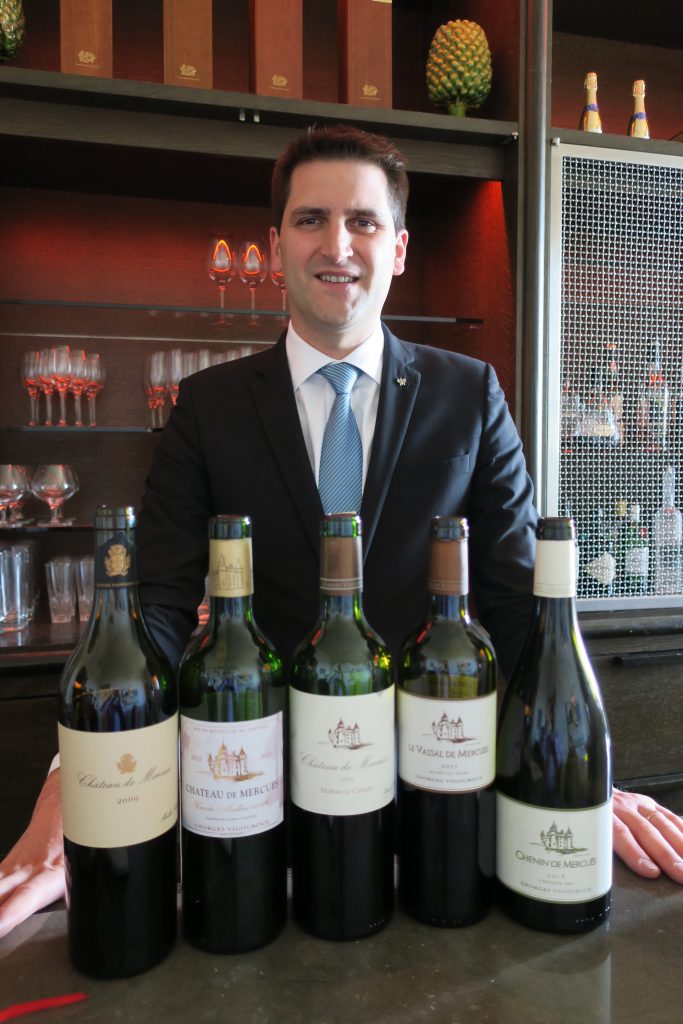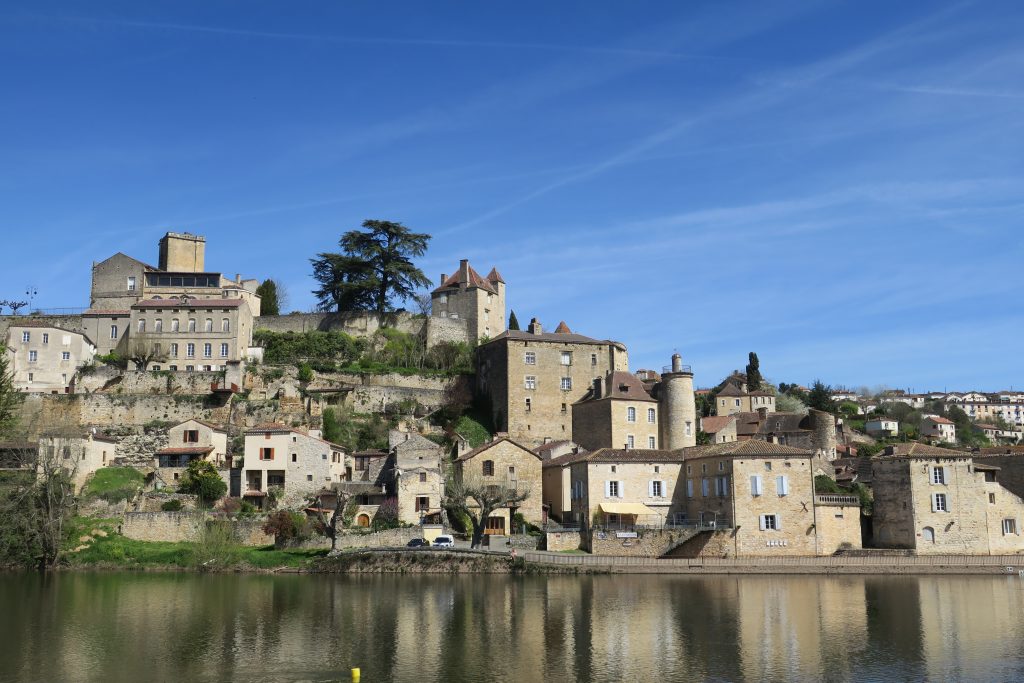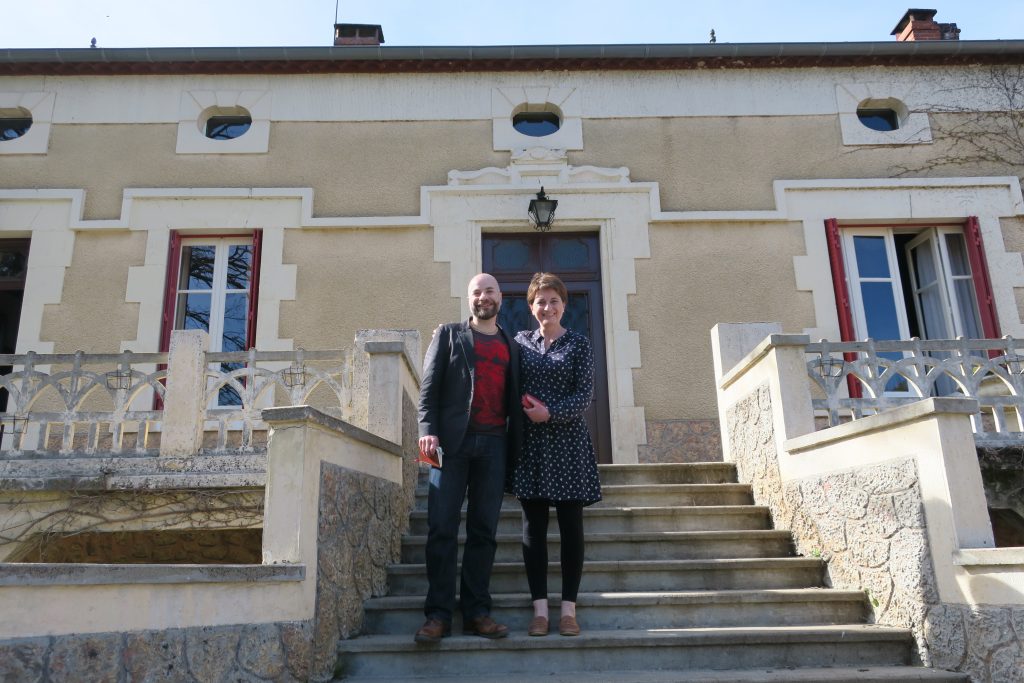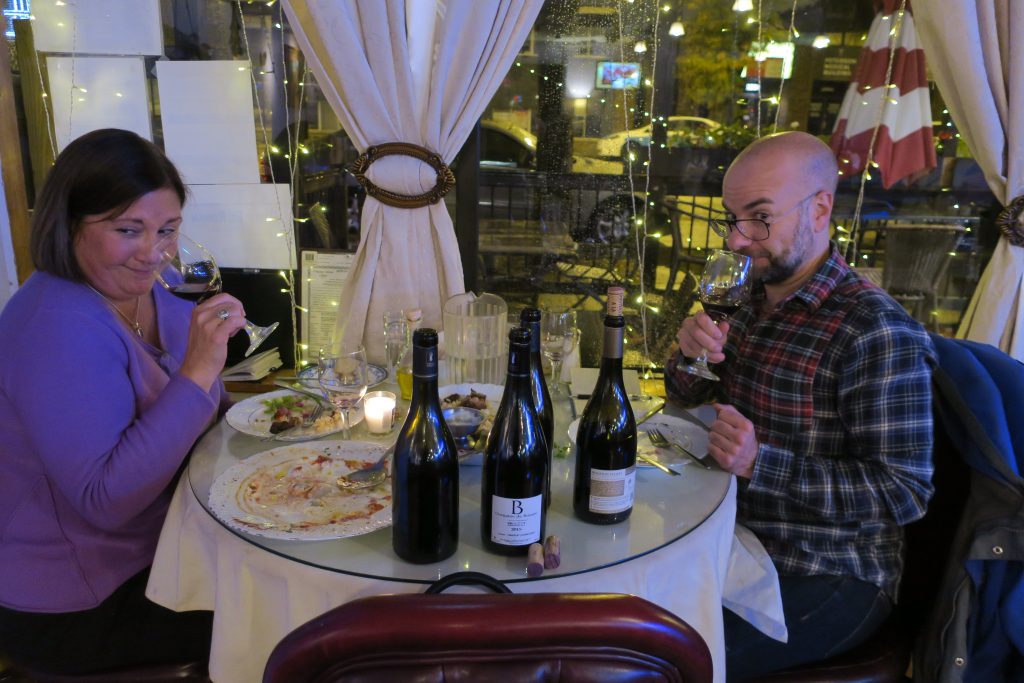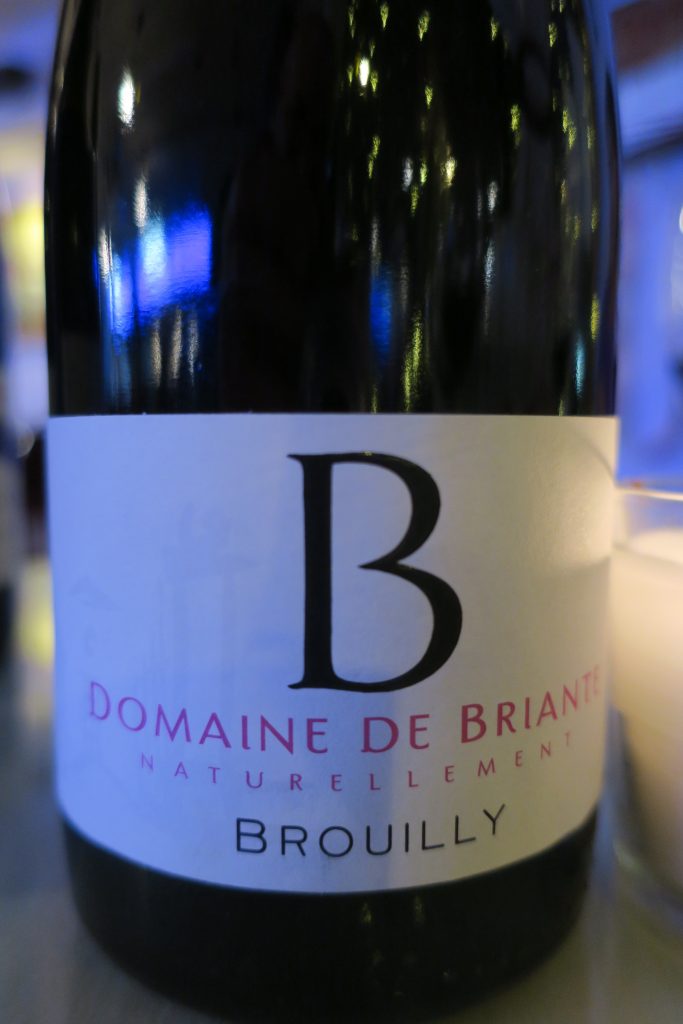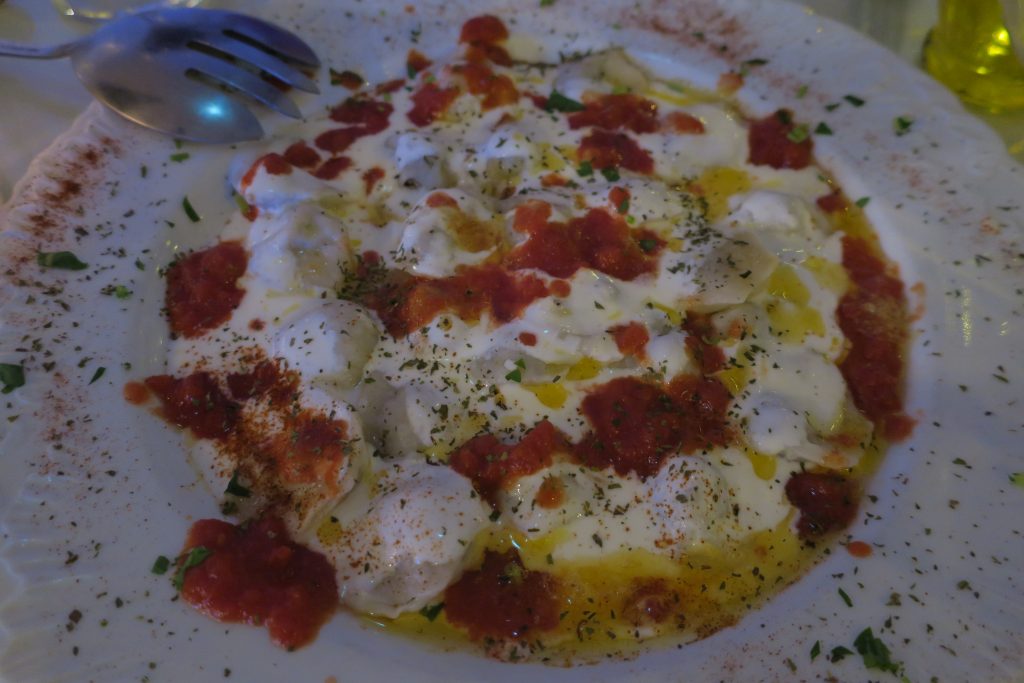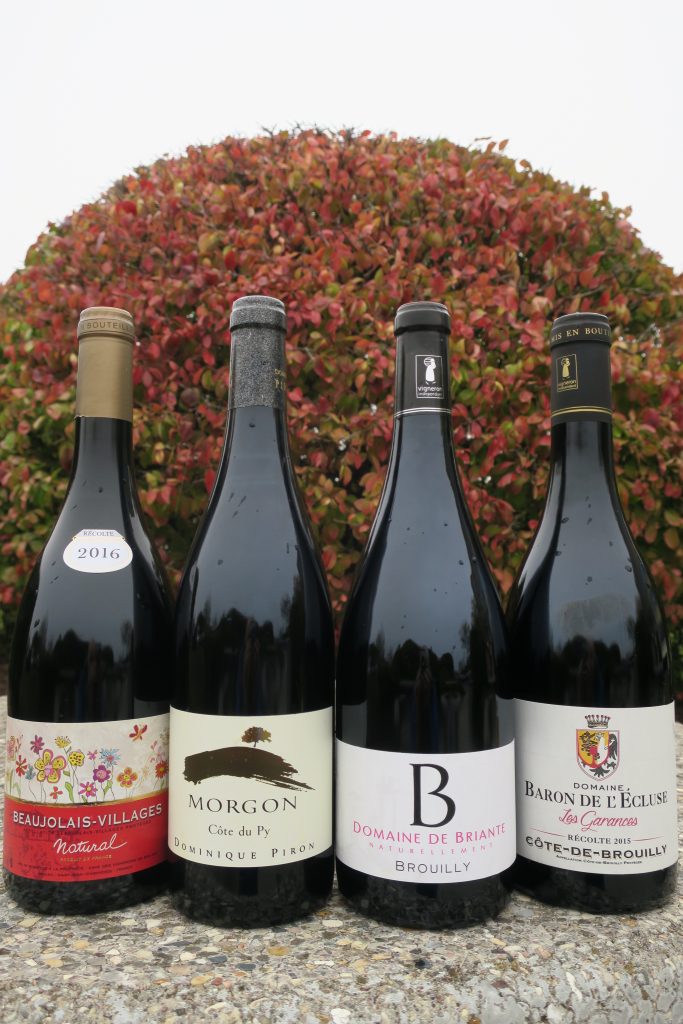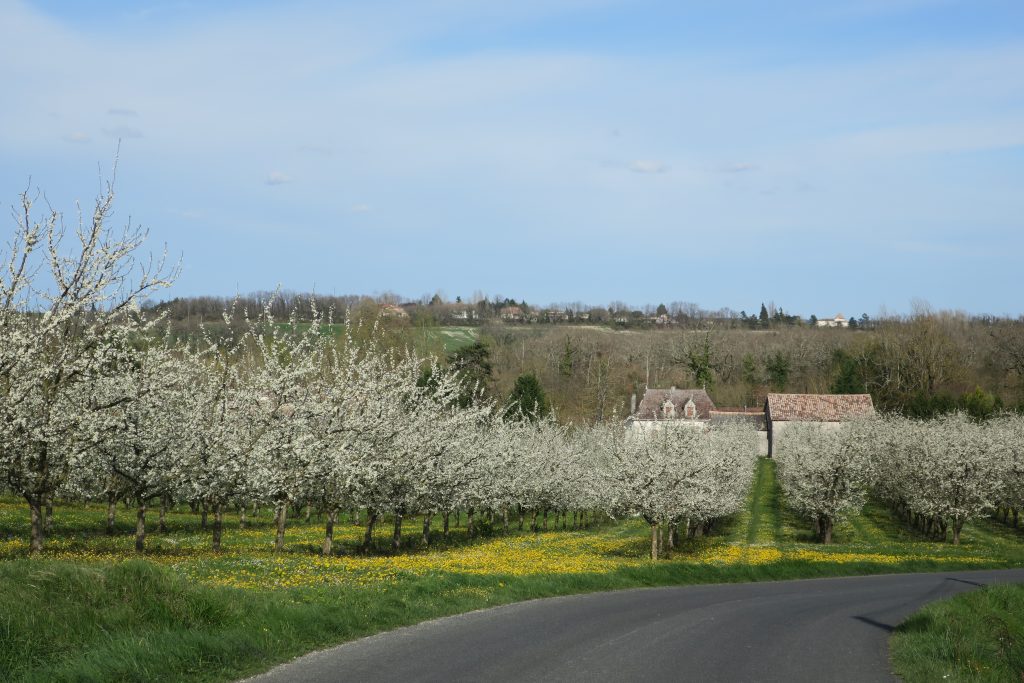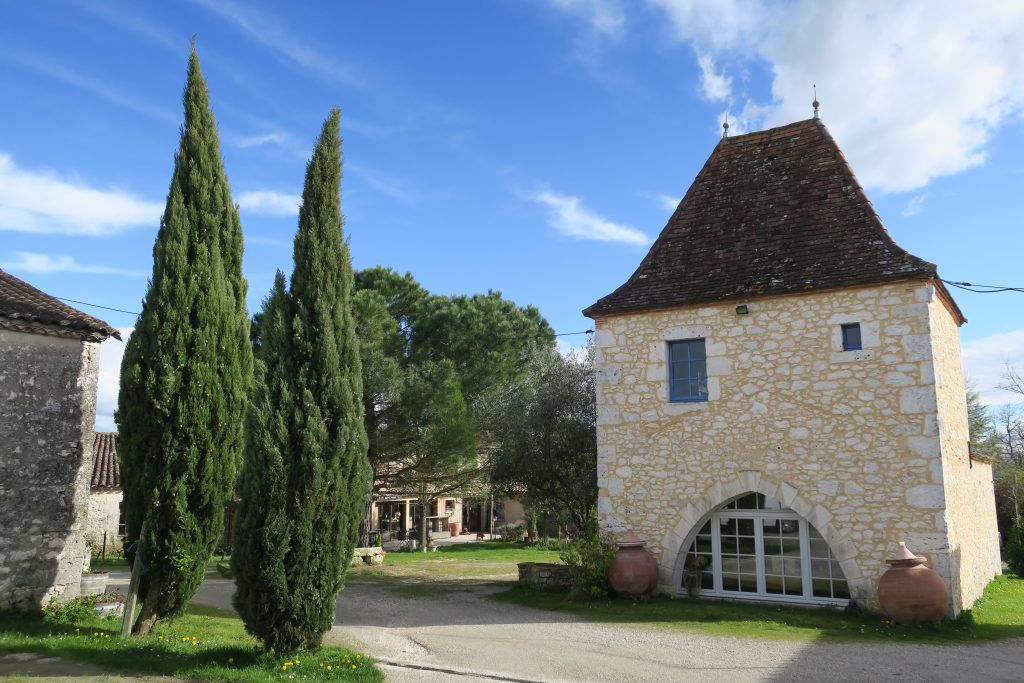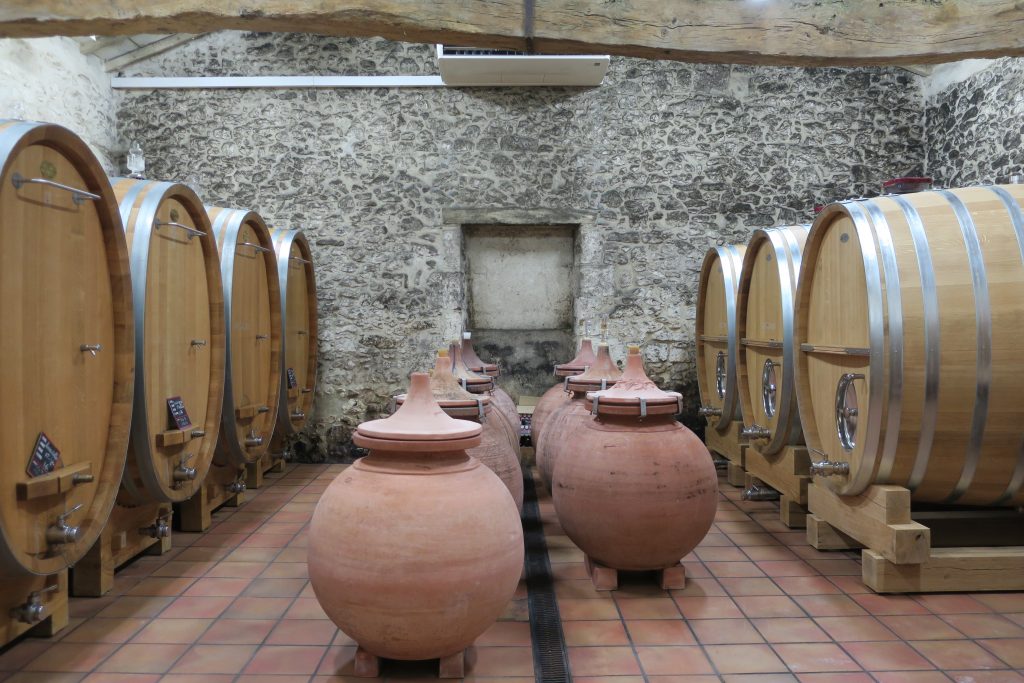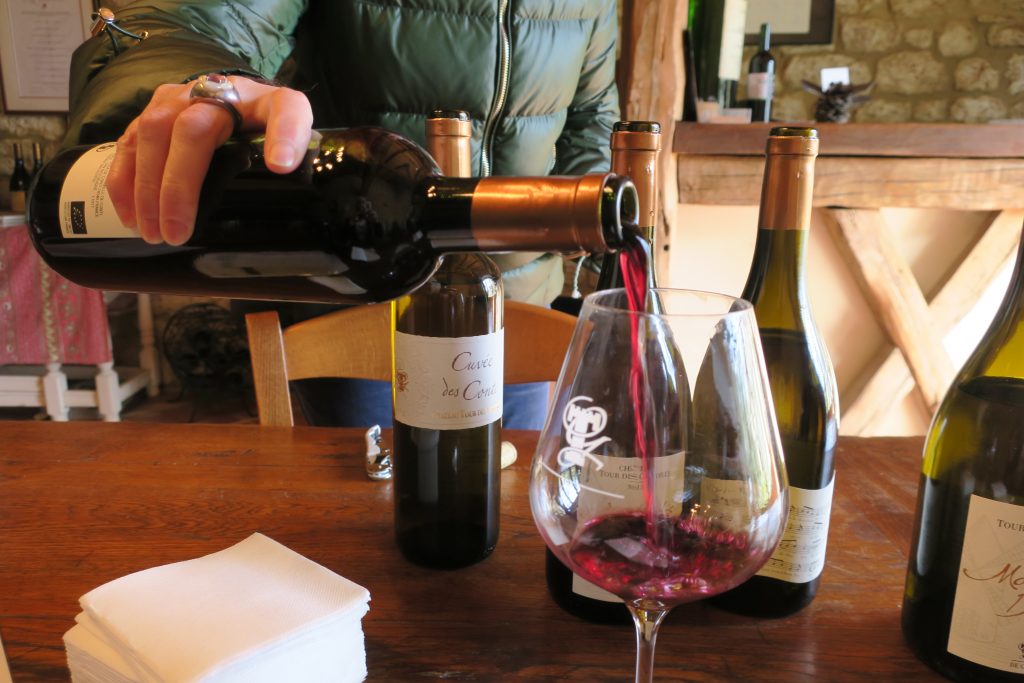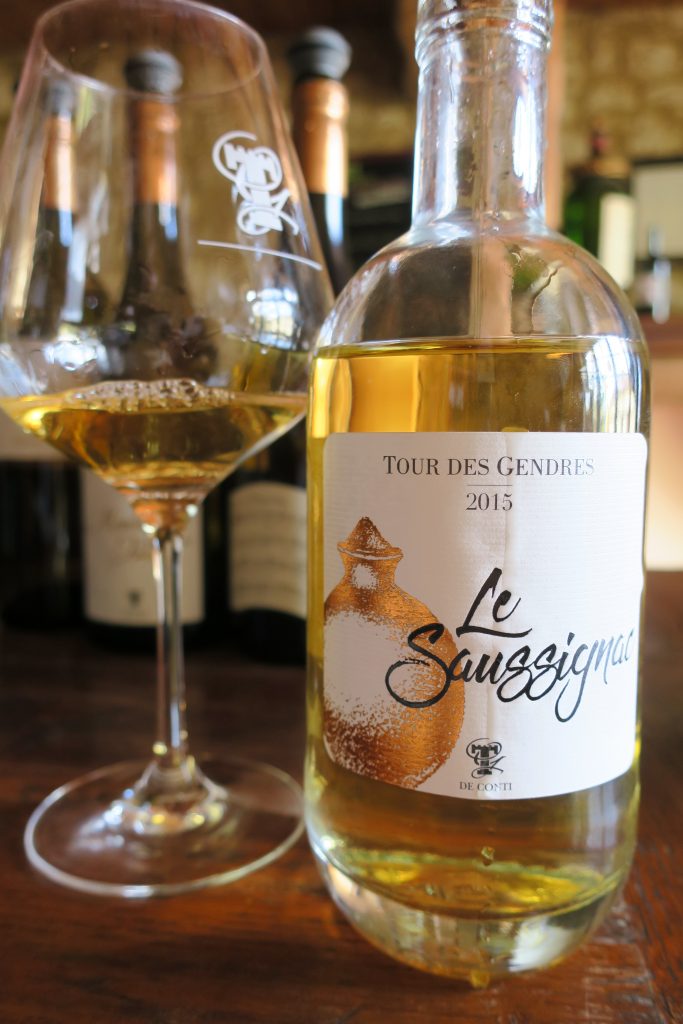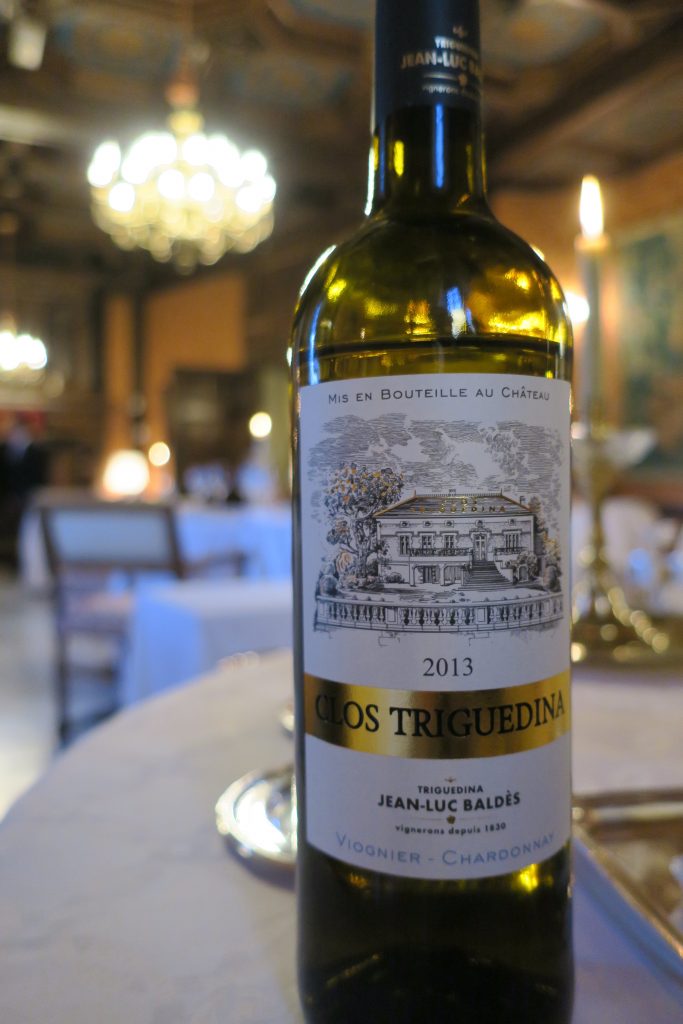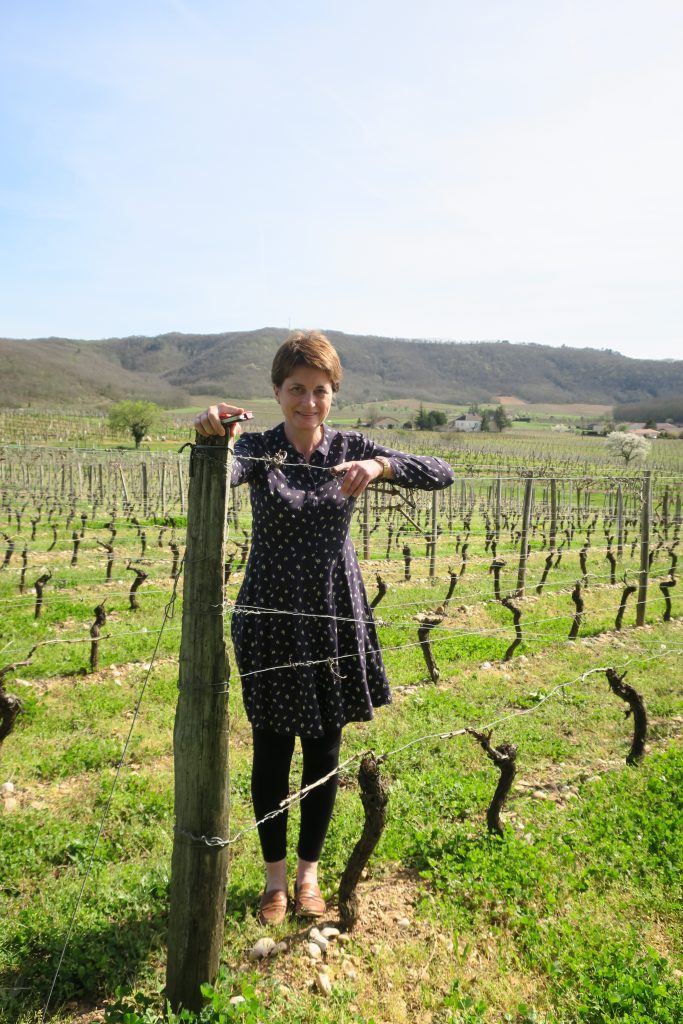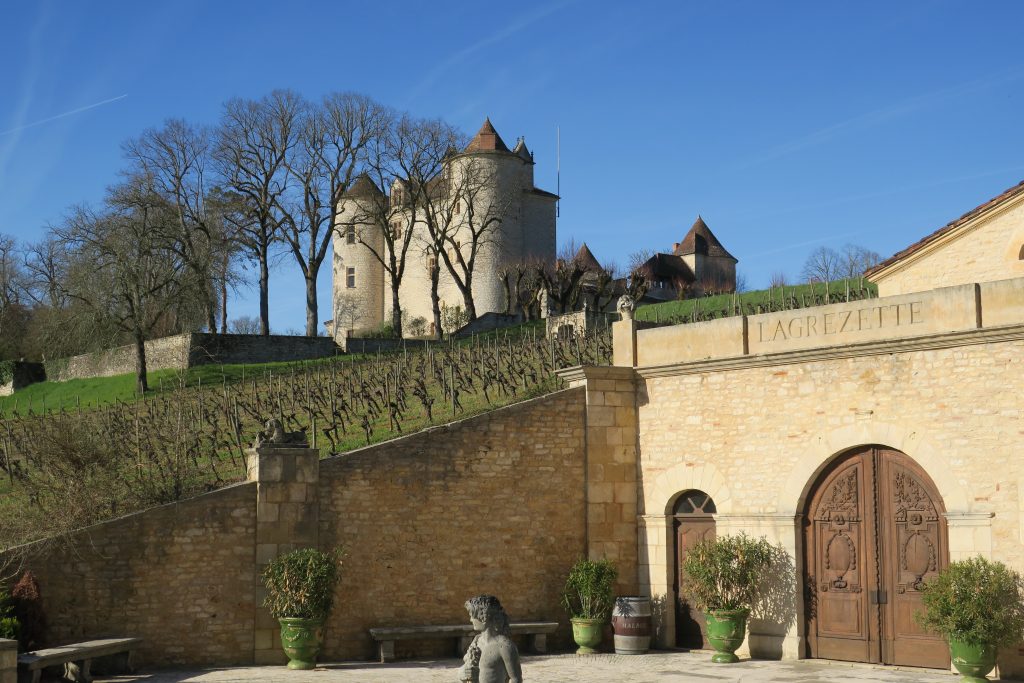Cahors: A Lot To Love #Winophiles
In her sanctimonious book, For the Love of Wine, Alice Feiring relates how a Georgian traveling companion felt “dismayed by the weak wines” of France, and natural-wine-advocate Feiring seems to agree. I don’t know what they were drinking on their trip to Paris, but it must not have been Cahors.
Cahors (pronounced CAH-or) is a not-especially-famous region to the southeast of Bordeaux, stretched out along both banks of the picturesquely tortured course of the Lot River. Its lack of fame makes sense when you consider how unkind history has been to the region. The Oxford Companion to Wine notes how although the Lot, which empties into the Garonne River and eventually the sea, is an ideal trading route, winemakers “long suffered from the protectionist measures… inflicted on Cahors by the merchants of Bordeaux,” who controlled the mouth of the river. Phylloxera reduced the vineyard area in Cahors by more than 90%, and the hybrid vines planted thereafter produced wines of dubious quality.
The Oxford Companion goes on to argue that the 1956 winter freeze “provided a clean slate at an appropriate moment in the appellation’s history.” Vignerons once again replanted, and this time, they returned to the roots of Cahors: Malbec.
Nowadays we associate Malbec with Argentina, but the grape was born in France, likely in Cahors. The dark, forceful wines Malbec produces in its birthplace are a joy to drink, though they feel more serious than their Argentine brothers. Argentine Malbecs are often sexy party boys, whereas Cahors Malbecs are handsome gentlemen who hang out in whiskey bars smoking cigars.
It’s possible to find lightweight Cahors, but almost all the wines I had on a visit last year had real stuffing and density. Weak wines these were not, even by Georgian standards. Consider the 2008 Château Lagrézette “Cru d’Exception,” a 100% Malbec (AOC rules require at least 70% Malbec in Cahors, which may be blended with Tannat or Merlot). It had an enticing deep, plummy aroma marked with a note of fresh tobacco. And the flavor! Sensationally rich, almost chewy dark-plum fruit, big but velvety tannins, and some tobacco on the finish. It was gorgeous paired with a lamb dish I had at Château de la Treyne.
I liked the wine so much I later visited Château Lagrézette, one of the few wineries in Cahors with an actual castle. Its gravity-flow winery is new, however, carefully inserted beneath one of the winery’s top vineyards, La Pigeonnier. In fact, they kept the soil layers separate as they excavated for the winery, so that the layers could be replaced in order, maintaining the integrity of the terroir.
I tasted the 2014 Château Lagrézette (85% Malbec, 15% Merlot) just before its release, and already, its big tannins had a velvety quality. It’s drinkable now, but like most good Cahors, it will benefit from a few years of aging. The winery’s top single-vineyard bottlings, the 2014 Paragon Massaut and the 2014 Le Pigeonnier, both had deeply concentrated fruit, well-integrated tannins and notes of purple flowers. I hope I have a chance to taste them again in a few years!
While in Cahors, I stayed in one of the region’s other notable castles, the 13th-century Château de Mercuès, perched on a tall bluff over the Lot. Beneath its gardens hides one of the first design wineries (i.e. designed with wine tourism in mind) built in France. Owner Georges Vigouroux makes wine under Château de Mercuès as well as Château de Haut-Serre and his own name, among other labels. The hotel manager of Château de Mercuès led me on a tour of the winery just below my room, followed by a tasting. He proved extremely knowledgeable about the winery’s history and terroir, as well as Cahors in general. I learned, for example, that 2013 wasn’t such a great vintage in Cahors. “Don’t write that down!” he said. Whoops!
The 2014 Château de Mercuès Malbec de Cahors (88% Malbec, 12% Merlot), full of purple fruit, already had a velvety quality to it, with impressively well-integrated tannins considering its youth. That was good, but yowza, the 2011 Château de Mercuès “Cuvée Malbec 6666” (100% Malbec) was out of this world. It smelled rich, almost porty, and the aroma practically leapt from the glass. Complex and lengthy, it kept driving steadily forward, developing and unfolding at its own pace. It reminded me of that guy who doesn’t need to shout to show he owns the room because he’s confident and knows he’s in control. And then there was the 2009 Château de Mercuès “Icône,” the winery’s “icon” bottling, created in consultation with Paul Hobbs, who’s something of an icon himself. I wrote a page of notes about this super rich, dense wine. What insistence, what driving force! Good God. Have a sip of this one, Alice!
Down the river stands one of Cahors’ most famous wineries, Clos Triguedina. A new, sleek tasting room was under construction when I visited, evidence of Cahors’ increasing popularity. Cahors doesn’t seem to rank near the top of most wine travelers’ bucket lists, but it should. The countryside is nothing short of sensational, with rolling hills and steep bluffs interspersed with unspoiled riverside market towns, set in an intoxicatingly beautiful patchwork of vineyards, orchards and pastures. Clos Triguedina occupies a particularly lovely spot, not far from the steep little town of Puy l’Évêque.
What a tasting! After trying the fruity and spicy entry-level 2014 Malbec du Clos and the earthy, surprisingly graceful 2012 Petit Clos, (Clos Triguedina’s second wine), we moved on to some really serious stuff.
The 2012 Clos Triguedina (80% Malbec, 18% Merlot, 2% Tannat) already felt elegant, with dark, almost raisiny fruit, focused spice, a note of earth and well-integrated tannins that ended with some mocha. Lovely. The 2010 “Les Galets” had a big, spicy aroma that opened my sinuses in the manner of wasabi. It seemed to last forever, its black fruit given a lift by spice and minerality, keeping it from being ponderous. The similarly lengthy 2010 “Petites Cailles” had even more earth to it, contrasting the dark fruit.
And we tried two of Cahors greatest wines. The 2007 Probus, the current release at the time, still felt young and intense, like a cooped-up teenager. It smelled of plum and leather, and in the mouth, it rang with tautness, like a plucked string. Mouth-filling fruit kept things in balance. Then there was the 2000 Prince Probus, with its brooding aroma of dark jam and sweet cherries. It tasted rich and open, with huge fruit, focused black-pepper spice and tannins that were so big, I could feel them coating my teeth, and yet they somehow were graceful. Magnificent.
At the end of the tasting, I remarked to winery employee Olga, who had led my tasting, and winery owner Sabine Baldès, who had joined us, “Wow, what an opportunity, to taste a whole range of your wines!” They had poured several others in addition to the ones described above, including memorable whites and rosés. I continued, “Thank you for sharing them with me, just a blogger, not Wine Spectator or anything.”
Olga’s unexpected response really touched me. “Yes, but you came to us,” she said. “Wine Spectator, we must go to them. They tell us what wines to send. You, you took the time to come here and visit us.”
And then Madame Baldès herself took me into the vineyards. It was a splendid day.
Read about the delicious white wines made in Cahors here.
————————-
And for more about Cahors, check out these delightful posts by my #Winophiles friends:
Liz from What’s In That Bottle paints the place Red Wine & Black All Over
Wendy from A Day In The Life On The Farm tempts the crowd with Basque Chicken Stew paired with Black Wine
Payal from Keep the Peas gives us a bit of everything we want with White Wine, Red Wine, Black Wine, Cahors!
Camilla from Culinary Adventures With Camilla gets the party going with Grilled Lamb Sirloin with Cedre Heritage 2015
Rupal from Journeys Of A Syrah Queen inspires and delights with Crocus Wines – Exploring Cahors With Paul Hobbs
Jeff from Food Wine Click may be getting us in trouble with Forbidden Foods and Stinky Cahors
Robin from Crushed Grape Chronicles gets out the map and takes us to Cahors – Malbec from along the winding river Lot
And on L’Occasion, Jill and Jason share Cahors: Your Favorite Wine For Fall

